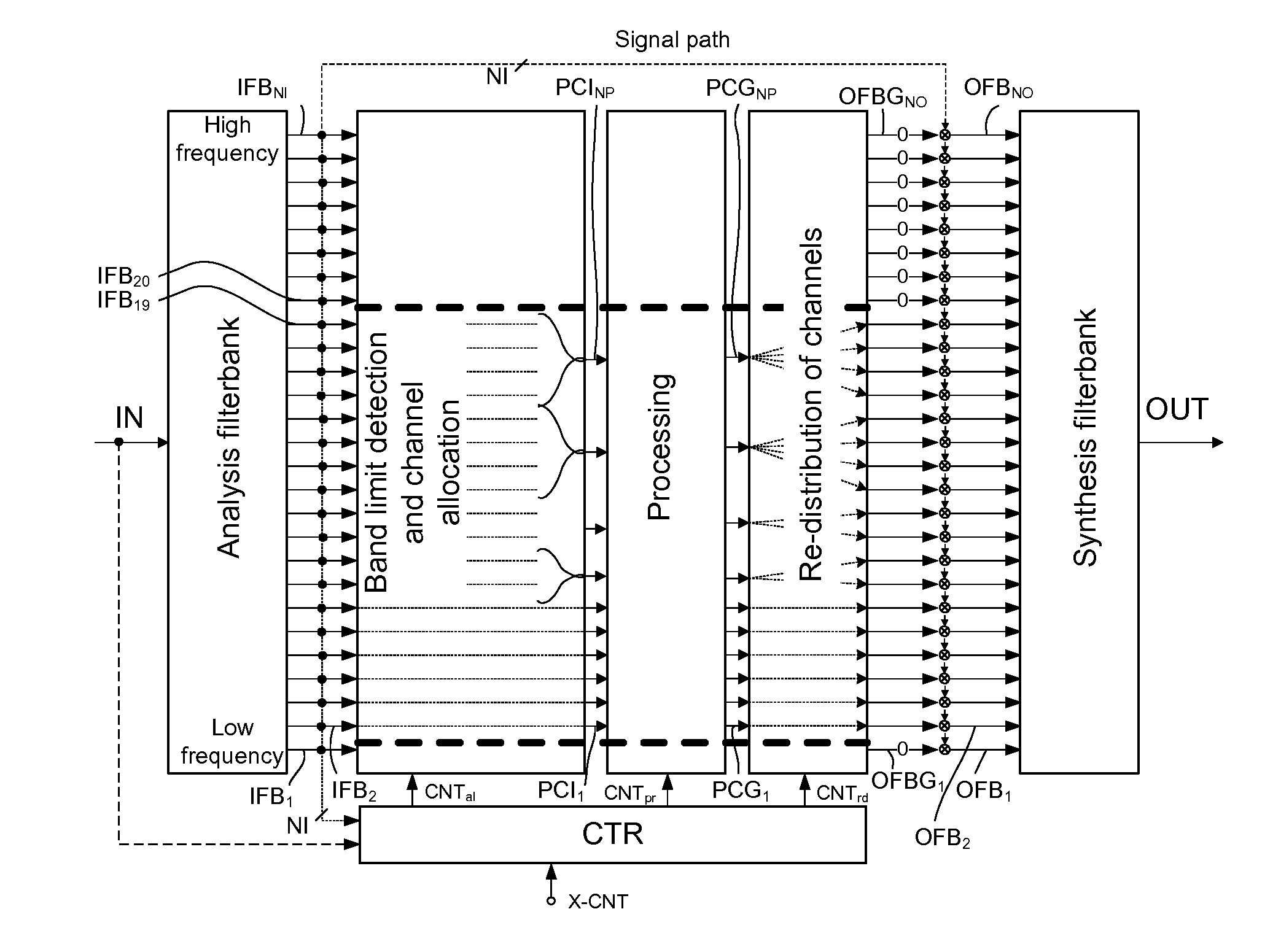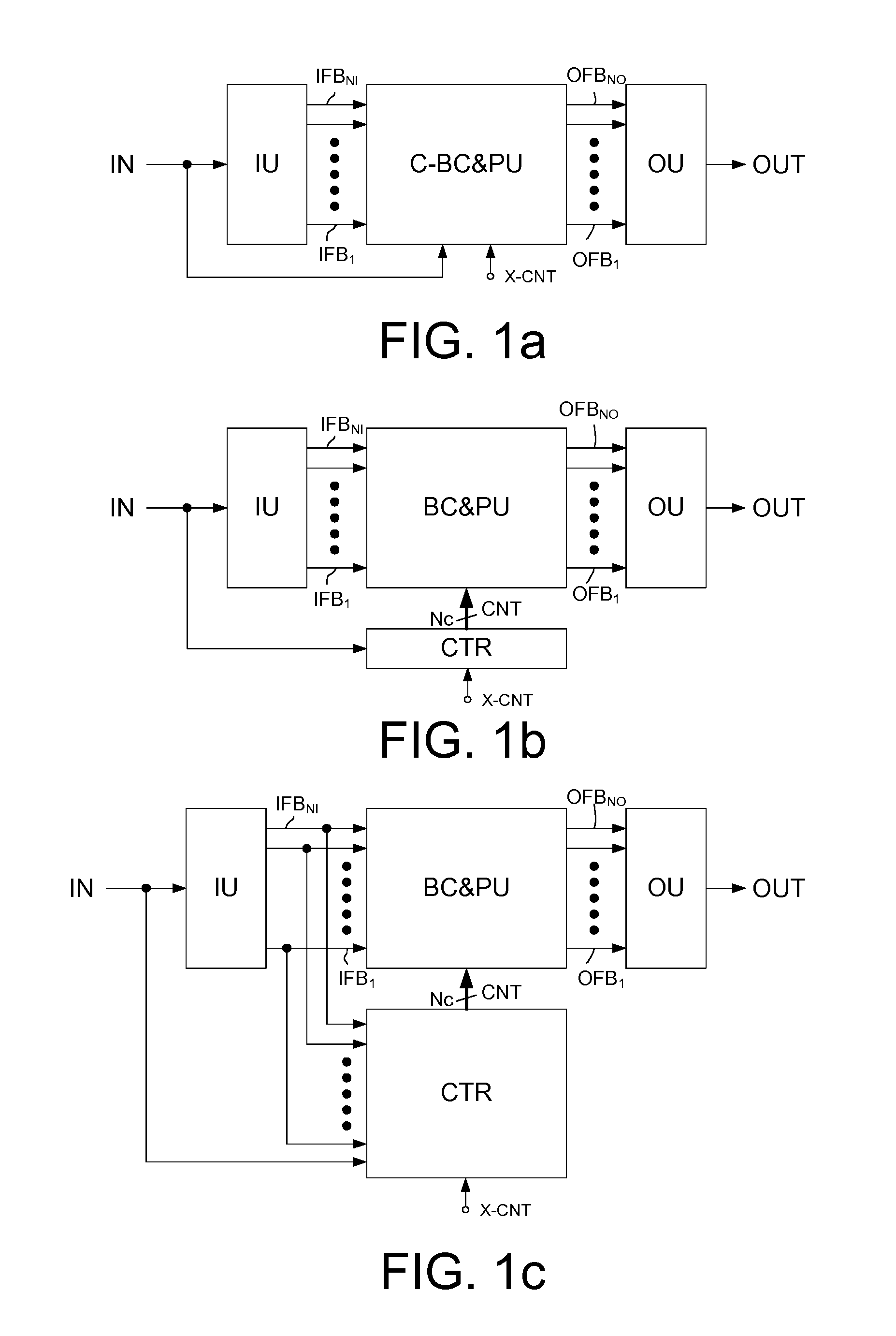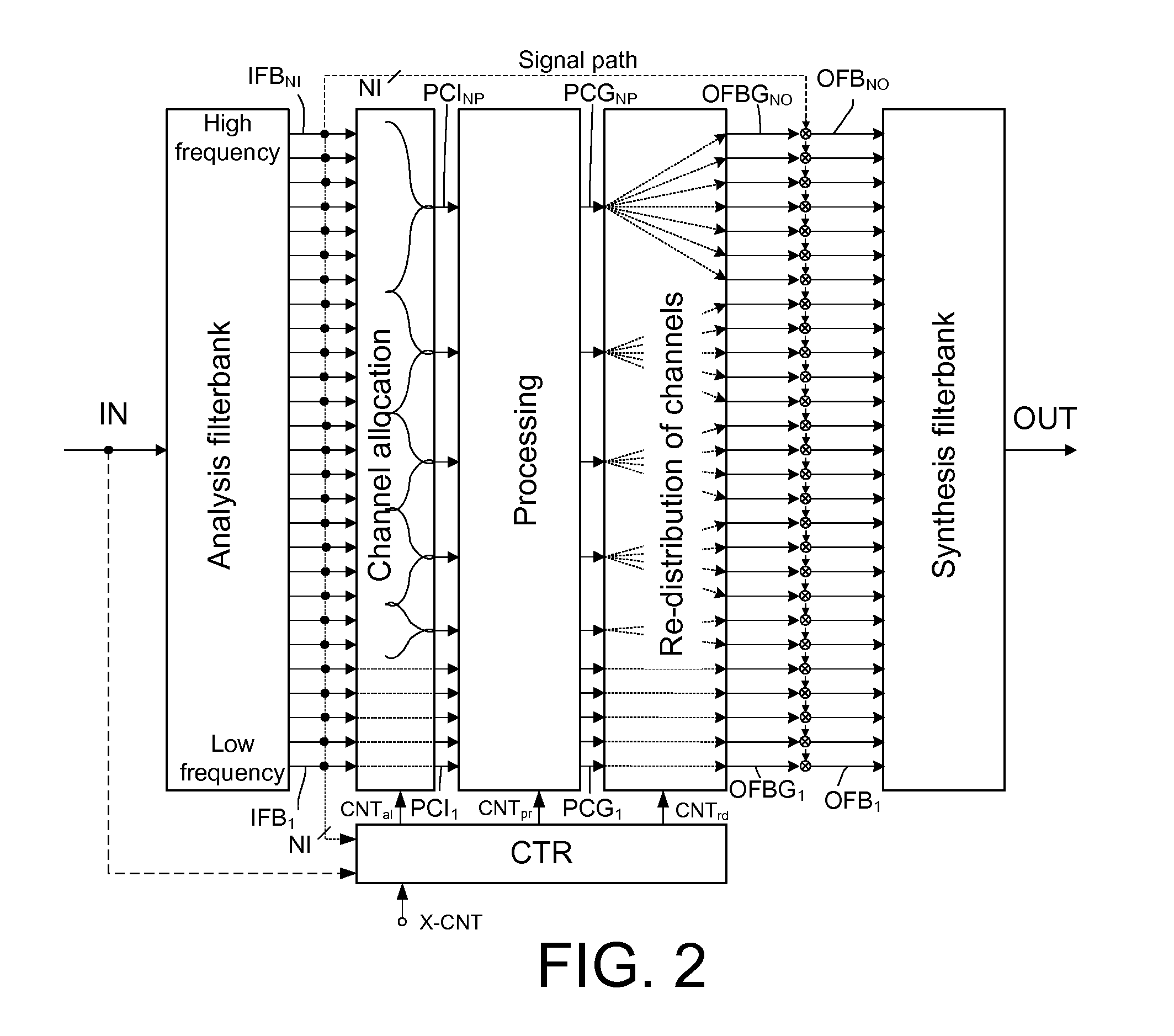Audio processing device, system, use and method
a processing device and audio technology, applied in the field of audio processing, can solve the problems of re-calibration of parts of the processing system, such as level estimators, and achieve the effects of reducing the number of channels being processed, reducing the bandwidth of individual channels, and reducing the number of channels
- Summary
- Abstract
- Description
- Claims
- Application Information
AI Technical Summary
Benefits of technology
Problems solved by technology
Method used
Image
Examples
Embodiment Construction
[0099]In the following the terms ‘frequency band’ and frequency band signal'(associating a frequency band with its contents) are used interchangeably.
[0100]FIG. 1 shows three different embodiments of an audio processing device according to the present disclosure. All three embodiments comprise an input unit IU receiving a time domain electric input signal IN and an output unit OU for generating a time domain output signal OUT. The input unit IU is adapted to split or convert the time domain electric input signal IN to NI (time varying) signals IFB1, IFB2, . . . , IFBNI, each representing a frequency or frequency range, here referred to as NI input frequency bands. The input unit IU may e.g. be implemented as an (possibly uniform) analysis filter bank, e.g. by means of a
[0101]Fourier transformation unit (e.g. an FFT-unit or any other domain transform unit). The output unit OU is adapted for generating a time domain output signal OUT from a number NO of (time varying) signals OFB1, OF...
PUM
 Login to View More
Login to View More Abstract
Description
Claims
Application Information
 Login to View More
Login to View More - R&D
- Intellectual Property
- Life Sciences
- Materials
- Tech Scout
- Unparalleled Data Quality
- Higher Quality Content
- 60% Fewer Hallucinations
Browse by: Latest US Patents, China's latest patents, Technical Efficacy Thesaurus, Application Domain, Technology Topic, Popular Technical Reports.
© 2025 PatSnap. All rights reserved.Legal|Privacy policy|Modern Slavery Act Transparency Statement|Sitemap|About US| Contact US: help@patsnap.com



